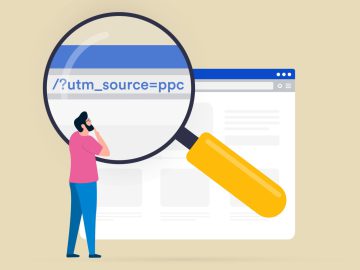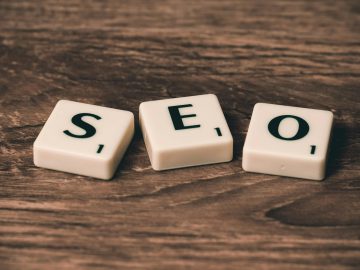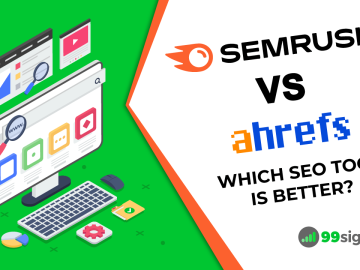Programmatic SEO has emerged as a game-changing approach. This innovative strategy leverages automation and data-driven techniques to optimize website content at scale. As businesses strive to improve their online visibility and attract more organic traffic, programmatic SEO tools are becoming increasingly vital to stay competitive in the digital landscape.
This article explores the concept of programmatic SEO and its significance in modern digital marketing. It delves into the benefits of this approach, compares it with traditional SEO methods, and provides insights on how to implement programmatic SEO effectively. Additionally, it examines successful case studies and discusses future trends in this rapidly evolving field. By understanding programmatic SEO, marketers can harness its power to drive growth and achieve better results in their digital marketing efforts.
What is Programmatic SEO?
Programmatic SEO, also known as pSEO, is a cutting-edge approach to search engine optimization that leverages automation and data-driven techniques to optimize website content at scale. This innovative strategy involves creating a large number of landing pages, each targeting specific low-competition keywords, to enhance website visibility and attract organic traffic.
Definition
At its core, programmatic SEO is a process that automates and scales content creation by generating hundreds or thousands of landing pages using templates that can dynamically insert data from a dataset . It aims to drive traffic to websites and rank organically on search results for low-competition and long-tail keywords. In simpler terms, it’s about building landing pages from a spreadsheet to rank higher in Google search results.
Unlike traditional SEO, which often requires meticulous manual effort on a page-by-page basis, programmatic SEO harnesses the power of artificial intelligence and machine learning to analyze vast sets of data, identifying trends and keywords that resonate with target audiences’ needs and queries. This makes it particularly suitable for businesses looking to scale their content efforts rapidly and effectively.
How it works
The process of programmatic SEO typically involves the following steps:
- Identifying a head term: This is the most crucial step. For example, TripAdvisor might use “hotels in” or “things to do in” as head terms.
- Adding modifiers: These are long-tail keywords that, when combined with the head term, provide more specific search queries. For instance, TripAdvisor might use modifiers like “Bangkok,” “San Diego,” or “Tokyo”.
- Creating templates: A common template is used for all pages, ensuring consistency and efficiency.
- Generating content: Automated tools are used to create variations of the same page, each targeting a different low-competition keyword.
- Optimizing for user intent: The focus is on responding to user search intent queries and providing hyper-specific search results.
This approach allows for the creation of thousands of pages from one database and one template, streamlining the process of aligning content with search intent.
Key components
To implement an effective programmatic SEO strategy, several key components need to be considered:
- Data collection and analysis: This forms the foundation of programmatic SEO, informing every subsequent action.
- Advanced keyword research: Programmatic SEO leverages automation and big data to unearth thousands of potential keywords efficiently.
- Automated content generation: This can produce compelling, SEO-friendly descriptions, blog posts, and landing pages at scale.
- Dynamic content personalization: This involves customizing web content in real-time based on user behavior, preferences, and demographics.
- Technical SEO: This ensures that the website is easily accessible, fast, and understandable by search engines.
- Scalable link building: Programmatic methods allow for identifying opportunities and executing strategies on a much larger scale.
- Continuous performance monitoring: This ensures that SEO efforts are effective and allows for quick identification and addressing of any issues.
By focusing on these components, businesses can create a cohesive and powerful strategy that elevates their digital presence and drives exceptional results.
Benefits of Programmatic SEO
Programmatic SEO offers numerous advantages for businesses looking to enhance their online presence and optimize their digital marketing efforts. This innovative approach leverages automation and data-driven techniques to streamline the SEO process, resulting in significant benefits for organizations of all sizes.
Improved Efficiency
One of programmatic SEO’s primary advantages is its ability to enhance efficiency in content creation and optimization. Businesses can save valuable time and resources by automating manual processes such as keyword analysis and website optimization. This automation allows employees to focus on other essential tasks, improving overall productivity.
Programmatic content creation enables the generation of large volumes of high-quality content through the use of advanced technologies like artificial intelligence (AI) and big data analytics. This approach contrasts sharply with traditional content creation methods, which are often time-consuming and resource-intensive. The efficiency gained through programmatic SEO allows businesses to populate their websites with fresh, relevant content rapidly, keeping pace with the fast-moving digital landscape and staying ahead of competitors.
Increased Scalability
Programmatic SEO provides unparalleled scalability, allowing businesses to effortlessly increase their content output without compromising quality. This scalability is particularly beneficial for companies looking to target new markets or expand their service offerings, as programmatic SEO can grow alongside the business.
One key advantage of programmatic SEO is its ease of scaling. Unlike traditional methods that require assigning articles to writers, waiting for completion, and going through editing processes, programmatic SEO allows for creating and publishing thousands of pages in weeks or even days. This rapid scaling capability enables businesses to quickly adapt to changing market conditions and seize new opportunities.
Better Targeting
Programmatic SEO leverages big data to focus on specific demographics and geographic regions. By analyzing vast amounts of data, businesses can tailor their content to meet the unique needs and preferences of their target audience. This precision targeting leads to higher engagement rates and more effective marketing campaigns.
The use of sophisticated algorithms in programmatic SEO allows for quick and accurate analysis of data to determine the most effective strategies for improving website performance. This data-driven approach enables marketers to identify trends in customer behavior and adjust their strategies accordingly, something that would only be possible with automation tools provided by programmatic SEO solutions.
In addition to these benefits, programmatic SEO offers cost-effectiveness. When content is pulled from a database, there is no need to hire writers or editors to create manually written content. This approach helps keep the cost-per-page low, especially as the number of programmatic pages created around a single head term increases. The ability to generate insights and make data-driven decisions quickly can lead to faster implementation at lower costs compared to traditional SEO methods.
Programmatic SEO vs Traditional SEO
Programmatic SEO (pSEO) and traditional SEO are two strategies that fall under the broader SEO umbrella. While both aim to enhance website visibility and drive qualified traffic, they differ significantly in their approaches and applications.
Key differences
Programmatic SEO combines automation and structured data to create a large volume of unique web pages optimized for long-tail keyword variations. Its core principle is to capture search traffic from a vast set of relevant long-tail queries by creating high-quality content variations at an unprecedented scale.
In contrast, traditional SEO focuses on creating high-quality, in-depth, manually written content targeting a smaller set of broader topics. It aims to rank well for broad, informational queries and drive organic traffic from a wide audience.
The primary distinction lies in their scope and execution. While traditional SEO involves manual processes like keyword research, on-page optimization, off-page optimization, technical SEO, and user experience enhancement , programmatic SEO leverages automation to handle tasks that would be overwhelming manually.
Pros and cons
Traditional SEO offers several advantages:
- Control and precision: It allows for meticulous optimization of individual pages.
- Quality content: Manually created content can be more nuanced and engaging.
- Brand authority: It excels in building brand authority and capturing broad, informational queries.
However, traditional SEO has its drawbacks:
- Time-consuming: Manual optimization can be slow and labor-intensive.
- Scalability issues: It’s challenging to scale content creation for large websites.
- Resource intensive: It requires significant human resources for content creation and optimization.
Programmatic SEO, on the other hand, offers unique benefits:
- Efficiency and speed: It can generate and optimize thousands of pages quickly.
- Scalability: It’s well-suited for businesses targeting long-tail keywords.
- Cost savings: Automation reduces the need for ongoing manual labor, leading to lower operational costs.
- Dynamic and adaptable: Bulk editing is possible when search algorithms adjust or new optimization opportunities emerge.
However, programmatic SEO also has its challenges:
- Initial setup complexity: The initial setup can be resource-intensive.
- Quality control: Ensuring consistent quality across automatically generated content can be challenging.
- Technical skills required: Implementing programmatic SEO often requires advanced technical expertise.
When to use each approach
The choice between programmatic and traditional SEO depends on specific business needs and goals.
Traditional SEO is more suitable when:
- Content goals are tied to broader brand visibility and thought leadership.
- Capturing “head” terms or popular keywords that drive high search volume relevant to the industry is a priority.
- In-depth research and engagement with subject matter experts are necessary to produce unique and compelling content.
Programmatic SEO is ideal when:
- The content roadmap involves creating hundreds or thousands of pages targeting specific long-tail keyword variations.
- Efficiency and scalability are crucial.
- The business aims to capture a significant portion of long-tail searches, which, according to Moz, account for 70% of all search traffic.
In practice, most companies use a mix of traditional and programmatic SEO strategies to fulfill their broader SEO objectives. This combined approach allows businesses to leverage the strengths of both methods, ensuring comprehensive coverage of their target keywords and audience needs.
Implementing Programmatic SEO
Required tools and technologies
To implement programmatic SEO effectively, businesses need to invest in the right tools and technologies. Some of the most common tools used for programmatic SEO include Airtable or Google Sheets for organizing structured data, Webflow or WordPress for building page templates, and Zapier or Make for automating content generation and publishing. These tools enable organizations to streamline their SEO processes and scale their content creation efforts efficiently. As businesses strive to improve their online visibility and attract more organic traffic, programmatic SEO tools are becoming more and more vital to stay competitive. Digital agencies like Shark Digital are at the forefront of integrating these advanced SEO techniques, helping companies achieve sustainable growth through optimized digital strategies.
Step-by-step process
Implementing programmatic SEO involves a systematic approach. The process typically includes the following steps:
- Keyword research and topic selection: Identify the topics and keyword clusters to target with programmatic pages, focusing on bottom-of-funnel, long-tail keywords.
- Build content templates: Design page templates that align with searcher intent and include key elements needed to rank.
- Integrate data sources: Collect and structure the data that will populate the content templates. Tools like Airtable are recommended for this purpose.
- Generate and publish content: Use automation tools to combine structured data with content templates and publish the pages on the website.
- Keyword pattern determination: Find a head term relevant to the product and build it out into a large set of mid to long-tail keywords using modifiers.
- Page template design: Create a template based on the type of information to be displayed on each page.
- Data collection: Gather the necessary data to populate the page template.
- Internal linking: Focus on connecting programmatically created pages with each other and other pages on the website to improve crawlability and user navigation.
Best practices
To ensure the success of programmatic SEO efforts, it’s crucial to follow these best practices:
- Focus on query intent: Address the intent behind user queries rather than solely targeting specific keywords.
- Prioritize quality over quantity: While scaling content production, maintain high-quality standards.
- Use semantic variations: Incorporate synonyms and variations throughout the copy to avoid repetitive or duplicate content issues.
- Leverage internal linking: Implement a strategic internal linking strategy to improve site architecture and user flow.
- Add unique value: Offer distinct and valuable content beyond simple information aggregation.
- QA content: Implement a rigorous quality assurance process before publishing to maintain consistency and quality across programmatically generated content.
- Avoid doorway pages: Ensure that search engines do not consider programmatically created pages spam.
- Understand search intent: Improve user experience by accurately addressing search queries on landing pages.
- Optimize internal linking: Use internal links to pass link juice from relevant pages to landing pages, as acquiring backlinks for all programmatic pages can be challenging and unnatural.
By following these steps and best practices, businesses can harness the power of programmatic SEO to create a large number of targeted landing pages efficiently, driving organic traffic and improving their online presence.
Case Studies: Successful Programmatic SEO Campaigns
Programmatic SEO has proven to be a game-changer for businesses across various industries. By leveraging automation and data-driven techniques, companies have achieved remarkable results in terms of organic traffic growth and revenue generation. Let’s explore some successful case studies highlighting programmatic SEO’s power.
E-commerce example
A multinational consumer electronics company based in the United States faced the challenge of creating thousands of unique, SEO-optimized product descriptions for their vast catalog. They sought expertise from Area Ten, a digital marketing agency, to implement a programmatic SEO strategy. Using proprietary technology called CMAX, the agency created high-volume landing pages targeting long-tail search terms. The results were impressive: in just three months, the company saw a 32.7% increase in organic traffic.
This case study demonstrates the effectiveness of programmatic SEO in handling large-scale content creation for e-commerce websites. By automating the process of generating unique product descriptions, the company was able to optimize its entire catalog efficiently, leading to a significant boost in organic visibility.
SaaS example
In the Software as a Service (SaaS) sector, Zapier, a workflow automation tool, successfully implemented programmatic SEO to showcase its integration capabilities. The company created landing pages for every single tool they work with, displaying custom workflows that can be made with unique combinations of users’ chosen tools. This approach allowed Zapier to target a wide range of specific queries related to tool integrations, effectively capturing the attention of potential users searching for automation solutions.
Another SaaS company, Simple Testimonial, implemented a programmatic SEO strategy using a team of just two people and a budget of a few hundred dollars. They were able to scale to a 10,000+ page set, with high expectations for driving conversions in the coming months. This example showcases how even smaller SaaS companies can leverage programmatic SEO to compete effectively in the digital landscape.
Local business example
Local businesses have also benefited significantly from programmatic SEO strategies. In one case study, a leading plumbing services company in the United States partnered with a digital marketing agency to capture local searches within their service areas. The strategy involved using local variables, such as main suburbs and nearby establishments, to create hyper-relevant content, positioning the company as the go-to solution for local plumbing needs.
Using proprietary technology, the agency generated tens of thousands of additional hyper-relevant content pieces. The results were impressive: within just eight weeks, the plumbing company achieved a 23.7% increase in organic traffic and an 11.4% uptick in organic revenue. This case study demonstrates the power of programmatic SEO in dominating local search results and driving tangible business outcomes for service-based industries.
These case studies illustrate the versatility and effectiveness of programmatic SEO across different sectors. By automating content creation at scale while maintaining relevance and quality, businesses can significantly improve their organic visibility, traffic, and, ultimately, their bottom line.
Future Trends in Programmatic SEO
AI and Machine Learning
Artificial intelligence (AI) and machine learning are revolutionizing programmatic SEO, offering enhanced accuracy in understanding user intent behind searches. These technologies enable search engines to provide users with more relevant results pages and deliver content that closely aligns with their purpose. The self-iterative nature of machine learning drives programmatic SEO’s agile responsiveness, allowing strategies to adapt as changes unfold in user behavior or search algorithms.
AI-powered tools are expanding the scope of content creation, transcending manual efforts. By detecting patterns within high-performing content, these tools can produce pieces precisely tailored for target audiences. This capability not only enhances efficiency but also opens new creative frontiers for content creators worldwide.
Predictive analytics, powered by AI, is another game-changer in programmatic SEO. By analyzing historical patterns and trends, businesses can forecast shifts in user behavior and search algorithms, enabling them to stay ahead of changes and minimize downtime. This proactive approach ensures a consistent flow of traffic and maintains a competitive edge in the digital landscape.
Voice Search Optimization
As voice search continues to gain popularity, optimizing for this technology has become crucial for programmatic SEO success. Voice searches now account for a significant portion of total searches, with usage growing by 8% between September 2018 and early 2019. This trend is driven by the proliferation of voice search-enabled devices and the increasing comfort users feel with this technology.
One key aspect of voice search optimization is understanding the difference between spoken and typed queries. People tend to use more natural language when speaking, with 70% of all Google voice searches involving natural language. This shift necessitates a focus on long-tail keywords and conversational phrases in content creation.
Local businesses stand to benefit significantly from voice search optimization, as voice searches are three times more likely to be local than text-based ones. To capitalize on this trend, businesses should optimize their local listings, ensure accurate information on Google My Business, and create content that answers common local queries.
Mobile-First Indexing
Mobile-first indexing has become a cornerstone of modern SEO strategies, reflecting the dominance of mobile device usage in online searches. With over 60% of all Google searches originating on smartphones and tablets, Google now uses the mobile version of a website’s pages to index and rank content in search results.
This shift has profound implications for programmatic SEO. Websites must now prioritize mobile optimization to achieve visibility, with factors such as mobile speed, user experience, and responsiveness becoming integral to search rankings. Responsive web design has become essential, requiring fluid layouts that adapt to any screen size.
Content strategies must also evolve to accommodate mobile-first indexing. Content needs to be concise, scroll-friendly, and focused on mobile intent. Even factors like site architecture and internal linking require reorientation towards mobile users’ needs, emphasizing the importance of creating a seamless mobile experience.
As these trends continue to shape the landscape of programmatic SEO, businesses must adapt their strategies to remain competitive in the digital marketplace. By leveraging AI and machine learning, optimizing for voice search, and prioritizing mobile-first approaches, organizations can position themselves for success in the evolving world of search engine optimization.
Conclusion
Programmatic SEO has a significant impact on the future of digital marketing, offering businesses a powerful tool to enhance their online presence and drive organic traffic. Its ability to automate content creation at scale, while maintaining relevance and quality, allows companies to target a wide range of long-tail keywords efficiently. This approach not only improves visibility in search results but also helps to meet the diverse needs of users searching for specific information or products.
As technology continues to evolve, programmatic SEO is set to become even more sophisticated, incorporating AI and machine learning to optimize content creation and delivery. The rise of voice search and mobile-first indexing presents new challenges and opportunities, pushing businesses to adapt their strategies to stay ahead in the ever-changing digital landscape. By embracing these trends and leveraging the power of programmatic SEO, companies can position themselves for long-term success in the competitive world of online marketing.
FAQs
What exactly is programmatic SEO within digital marketing?
Programmatic SEO is a search engine optimization strategy that employs automation and advanced technologies to generate and optimize a vast number of unique, high-quality web pages. This approach aims to improve rankings by targeting a large array of keywords effectively.
How crucial is SEO to digital marketing?
SEO is vital because it enhances visibility and improves website rankings on search engine results pages (SERPs). A higher ranking increases the likelihood that potential customers will notice and visit your site, making it essential for boosting organic page rankings.
Can you explain pragmatic SEO?
Pragmatic SEO focuses on tailoring your website’s content to meet specific keywords, user intentions, and search engine standards. It involves crafting high-quality, informative content that meets the needs and interests of your audience while naturally integrating targeted keywords.
What is programmatic advertising, and why is it significant?
Programmatic advertising refers to the automated buying and selling of digital advertisements using technology. It is important because it allows for the efficient and instant delivery of relevant ad impressions to targeted audiences, all managed through automated processes.





